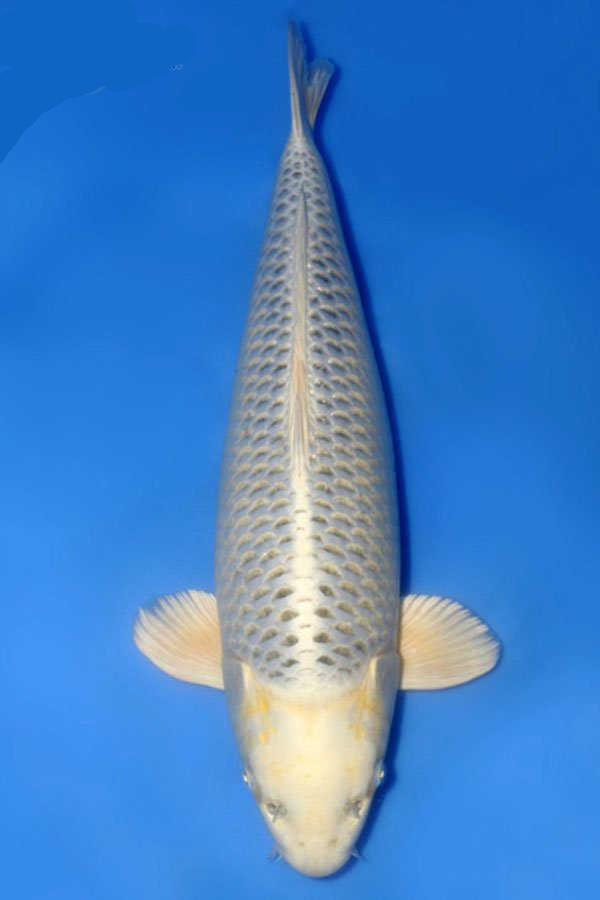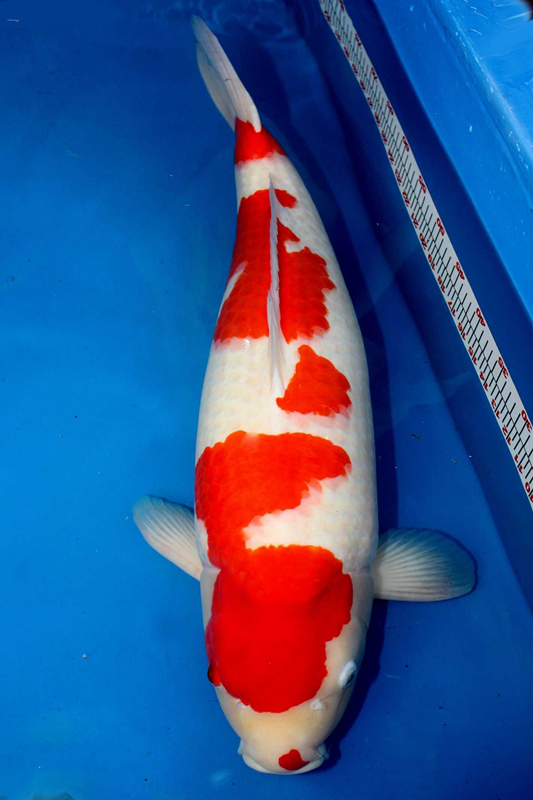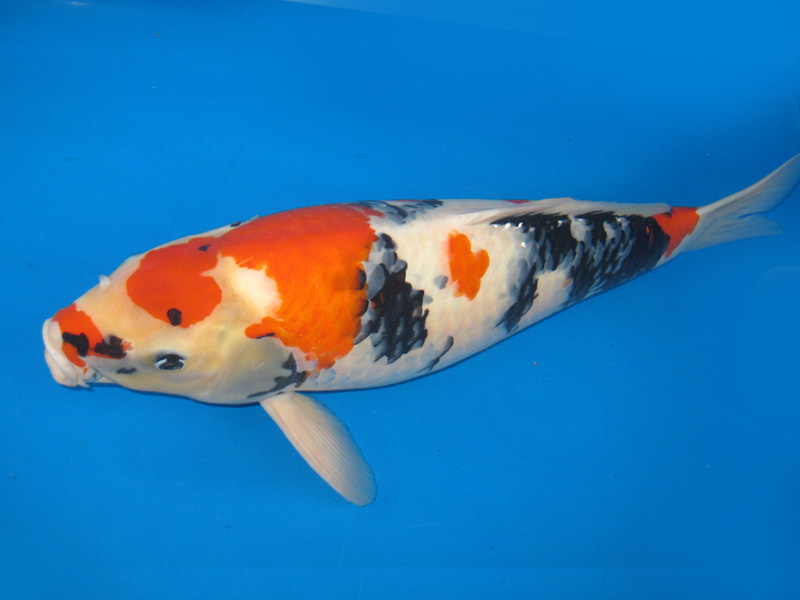Do you know the common diseases of koi and how to improve the cure rate of brocade carp?
I. diligent observation and early treatment
In general, after brocade carp are infected or invaded by pathogens, there are some signs, such as the slow movement of diseased fish, often slowly swimming on the surface of the water, not gathering, if alarmed, after sinking slightly, it will surface. There are also some fish at the onset of the disease, wild swimming, or gray body color, scales falling off, and so on. For example, after the occurrence of white crucian carp hemorrhagic disease, the wild miscellaneous fish in the early fish pond died and so on.

When there are signs of fish disease in the fish pond, timely measures should be taken for treatment to avoid the spread of the disease.
Second, make a correct diagnosis and prescribe the right medicine.
First of all, field investigation and analysis was carried out according to climatic characteristics, water source, fish species source, mixed culture proportion and density feeding management, epidemic law of fish disease over the years, fish appetite, action, body color and so on. Then examine the body surface, Gill filaments, muscles, internal organs and other parts of the body surface, Gill filaments, muscles and internal organs of dying diseased fish or dead fish carcasses. See if there are large parasites on the body surface, such as Chinese parasite, anchor head, etc., or bleeding spots, scale shedding, rotten fins, * red and swollen, and so on. Gill, Gill cover hyperemia and corrosion, Gill filament color, how much mucus, parasite, Gill filament rot with mud. After opening the abdomen of the fish, whether there is ascites, intestinal inflammation, hyperemia, liver and spleen and other organs hyperemia. Peel off the skin of the fish, whether the muscles bleed, etc. According to the specific symptoms of the examination, parasites, bacteria, viral diseases or complications were first diagnosed, and then a comprehensive analysis was made according to the performance of diseased fish to make a correct diagnosis and prescribe the right medicine.
Third, accurate calculation, the use of quasi-drug quantity
Accurate calculation, the use of the required dose is another key to the effect of the treatment of fish disease. For external use, the pool water volume should be accurately calculated, and the characteristics of water quality and the influence of water temperature at that time should be taken into account. The calculation of pool water volume should be based on the actual water surface and the average water depth. The calculation of the average water depth shall be based on the average of several depths of the pond. The dose of drugs taken internally is expressed in terms of the number of drugs consumed per kilogram of fish. There are often two methods of calculation:
Calculated by weight and feeding rate, it should be used flexibly. When most of the fish in the pond eat vigorously, it is more accurate to calculate according to the total weight of the pond fish; when the pond fish is seriously ill or the climate is not good, resulting in loss of appetite, drugs should be mixed into the bait in a higher proportion according to the estimated feeding rate to ensure that the diseased fish that can still eat can get enough medicine. When preparing baits, the loss of drugs in water should also be taken into account. In order to estimate the total weight of pond fish, the proportion of growth and weight gain in each stage should be taken into account, and the feeding amount of bait should not be calculated by putting fish species.
IV. Mastering the characteristics of drugs and using drugs scientifically
The commonly used drugs for brocade carp disease have their own physical and chemical characteristics. Attention should be paid to rationalization in preservation and use to avoid invalidation caused by improper preservation and use of drugs. For example, which drugs can only be used for external use, which drugs are effective for internal use, and which drugs can not be used together. Which drugs will be more effective, which drugs will be affected by environmental factors, and so on. Baits should take into account the living habits of fish and make different baits such as buoyancy, sedimentation, particles, etc. Generally, if green, common carp and crucian carp are sick, they should be fed with sunken bait; grass carp should be fed with floating bait or mixed with medicine on aquatic plants; silver carp should be fed with particulate bait, and a certain amount of adhesive should be mixed to prevent the drug from being lost in the water. After the drug is fully dissolved, the drug should be sprinkled evenly throughout the pool, and the sprinkling time should be better in the afternoon, because the water temperature in the afternoon is high and the efficacy is high. When sprinkling medicine, sprinkle gradually from the upwind to the downwind, and the undissolved medicine after sprinkling the residue should not be thrown into the pool. Otherwise, the fish will be poisoned to death if swallowed.
5. Use a full course of treatment according to the type of disease
The course of treatment is the fundamental guarantee for the cure of fish disease. If there is no sufficient course of treatment, the pathogen cannot be completely eliminated and the effect of medication cannot be achieved. Therefore, the full course of treatment is an important link to completely eliminate pathogens and consolidate the therapeutic effect. In practice, the length of the course of treatment should be based on the specific types of diseases suffered by the fish. If invasive diseases are caused by parasites, generally use insecticidal drugs for 1-2 days as a course of treatment; for example, bacterial and viral diseases generally take 3-5 days as a course of treatment. As for the number of courses of treatment, it should depend on the severity of the disease and the priority of the course of the disease. For serious and long-lasting diseases, it is necessary to use two to three courses of treatment, otherwise the curative effect is not complete, there is the possibility of recurrent infection.
VI. Several points for attention
1. You should stop eating for 1 day before feeding the bait to make the fish hungry. After feeding the bait, you can finish it quickly.
two。 During the treatment period and just after treatment, it is not appropriate to change a large number of water and fishing, so as not to bring stimulation to the fish, cause stress reaction, aggravate the disease or cause recurrence.
3. The combination of internal administration and external elimination should be adopted in the treatment of fish disease, and relying solely on internal medicine can not play the role of internal and external attack.
4. In the treatment of koi fish disease, the same drug should not be used many times alone so as not to make the pathogen resistant to the drug. Drugs should be used alternately.
5. Once the disease occurs, no matter whether the treatment effect is good or bad, the loss can not be avoided. Therefore, it is necessary to adhere to the prevention and treatment policy of "giving priority to prevention and treatment as a supplement".
.
- Prev

Can the koi be fed when it is sick? salt can ease the burden on the internal organs of the koi.
Aquarium breeders, do you know that salt can ease the burden on the viscera of koi in koi breeding? Secondly, talk about the osmotic pressure adjustment function of two items of koi. The so-called "osmotic pressure" refers to the difference in water concentration due to differences in salt concentration. Usually, salt in an organism.
- Next

How to pick koi and five techniques for raising koi
Koi has a strong physique, bright colors, changeable patterns and heroic swimming posture, so it has high ornamental and feeding value. Its body length can reach 1-1.5 meters. Koi are distinguished by different colors, patterns and scales. Among them, butterfly koi was successfully cultivated in the 1980's.
Related
- On the eggshell is a badge full of pride. British Poultry Egg Market and Consumer observation
- British study: 72% of Britons are willing to buy native eggs raised by insects
- Guidelines for friendly egg production revised the increase of space in chicken sheds can not be forced to change feathers and lay eggs.
- Risk of delay in customs clearance Australia suspends lobster exports to China
- Pig semen-the Vector of virus Transmission (4)
- Pig semen-the Vector of virus Transmission (3)
- Five common causes of difficult control of classical swine fever in clinic and their countermeasures
- Foot-and-mouth disease is the most effective way to prevent it!
- PED is the number one killer of piglets and has to be guarded against in autumn and winter.
- What is "yellow fat pig"? Have you ever heard the pig collector talk about "yellow fat pig"?

